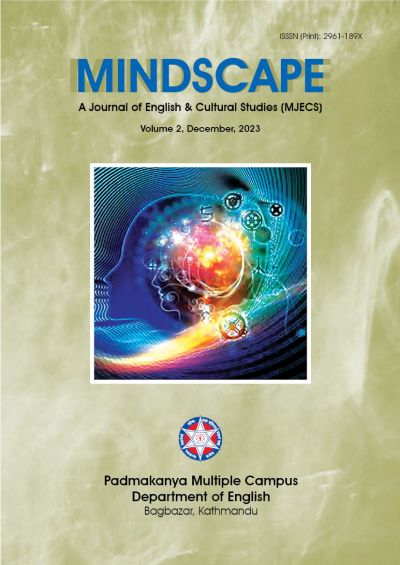Analysing Bijaya Hitan’s some Selected Stories from an Eco-centric Approach
DOI:
https://doi.org/10.3126/mjecs.v2i1.61689Keywords:
ecowriting, ecodegradation, contamination, Bagmati river, patriarchy, sewage system, biodiversityAbstract
This paper makes the Ecocritical reading of three stories, namely, “Bagmati Blues”, “Saharle Panchhayeki Buhari” (My translation “A Daughter-in-Law Disregarded by a City”) and “Nawabarshale Janmayeka Brykshyaharu” (My translation “The Groves Bred by New Year”), written by an ecowriter, Bijaya Hitan. Drawing on the Ecocritical and Ecofeminist theories of Lawrence Buell, Vandana Shiva, Greta Gaard, and some relevant journals and books, it analyzes the portrayals of non-human world that is the Bagmati river and her declining physical environment. As soon as Bagmati river enters the Kathmandu valley near Sundarijal, the water starts to deteriorate. The river has been used as dumping site for domestic and industrial waste water and solid waste. Besides that, the river has been widely used for sand extraction and land encroachment through squatter settlements at the bank of the river. Hitan, in his three short stories questions the ethics, policies, and cultural values of people at Kathmandu for treating Bagmati as an instrument, only a means of human ends. This paper scrutinizes the power of words, subject, images and narrative of aforementioned stories to reinforce to understand the oppressive human-environment relations causing multiple forms of ecodegradation that afflict Bagmati river today. The significance of this study is to exhibit how Hitan’s ecowriting has proved to be an effective means of communicating the burgeoning environmental concerns of Bagmati and resolving this environmental harm through the adoption of possible alternatives practically and morally.




